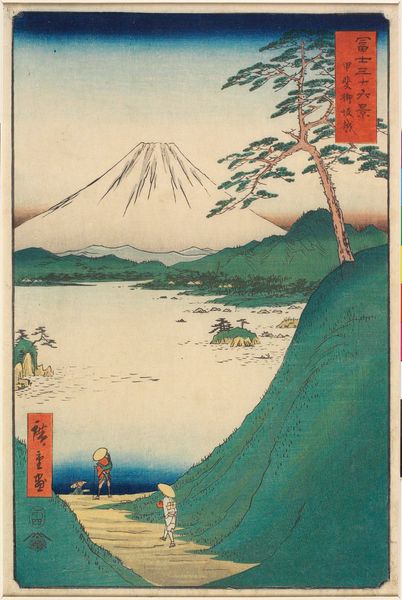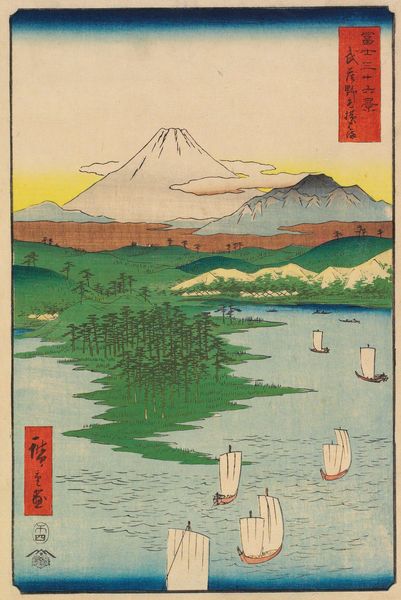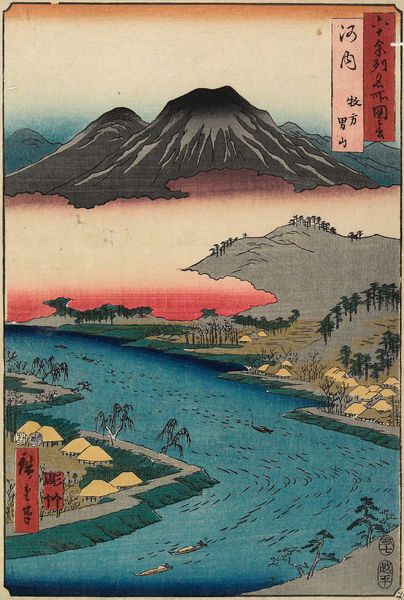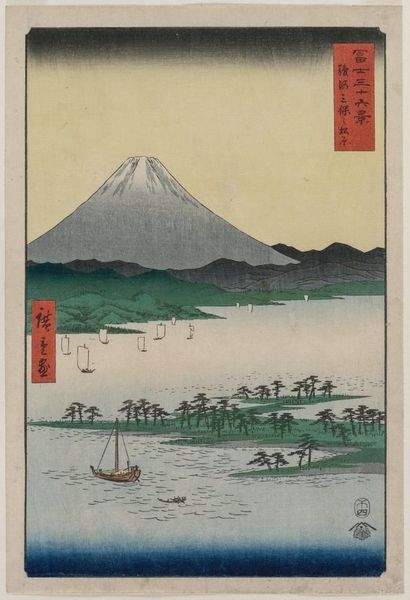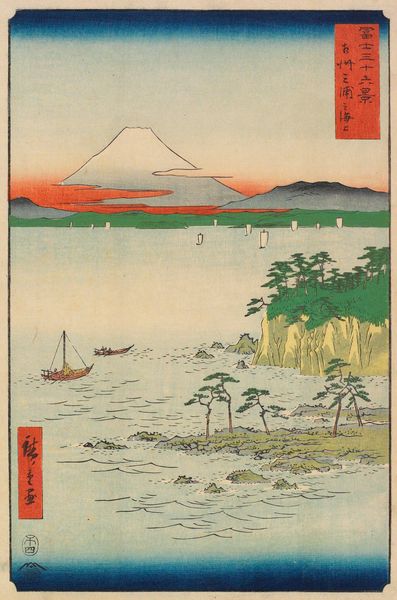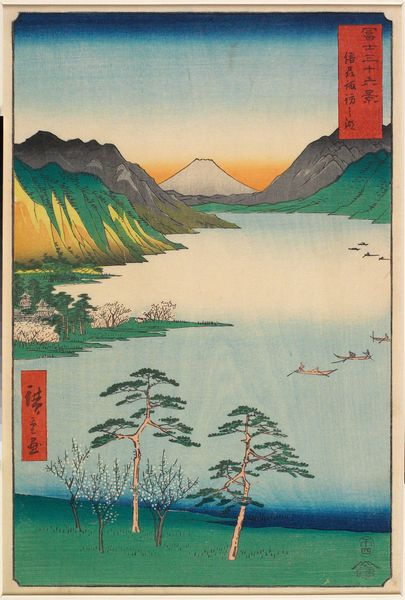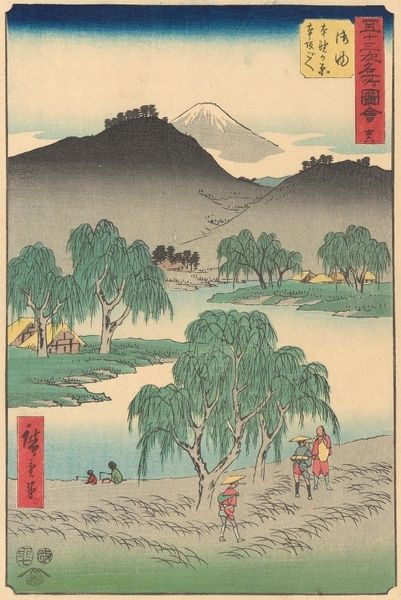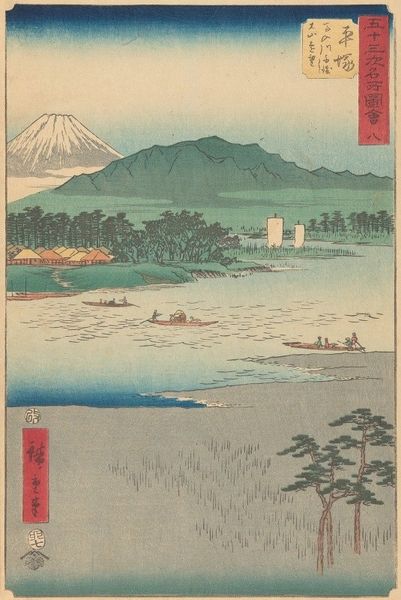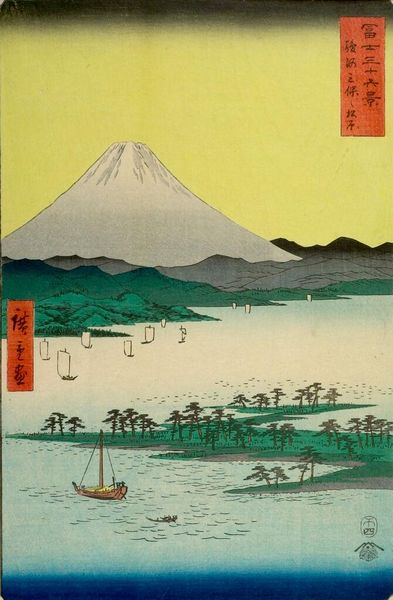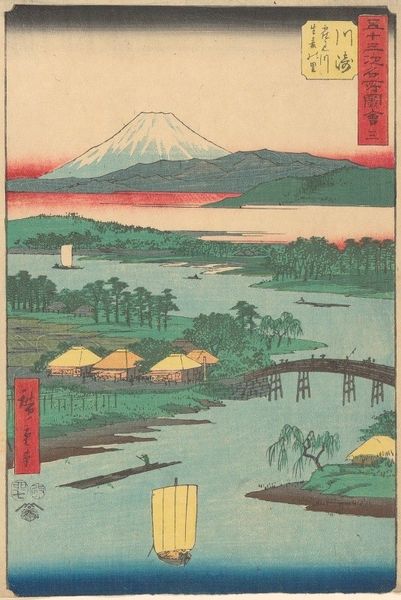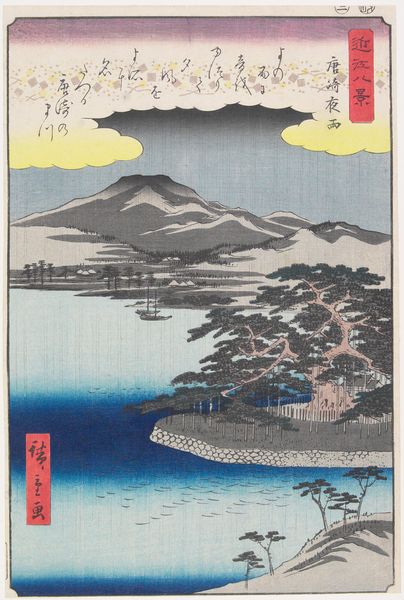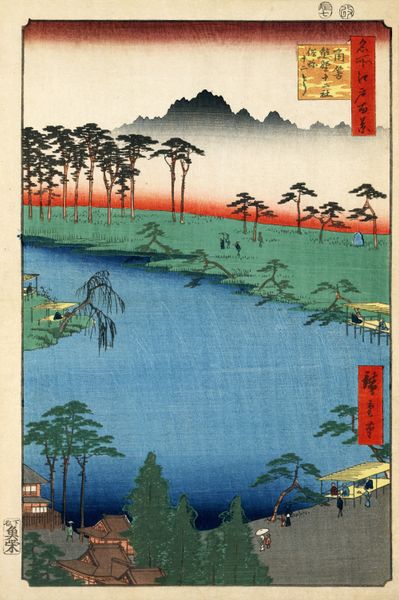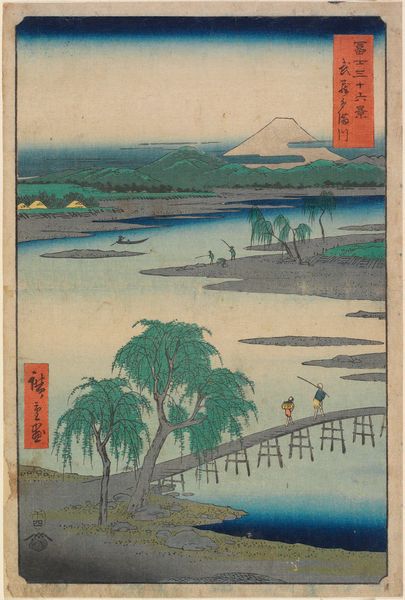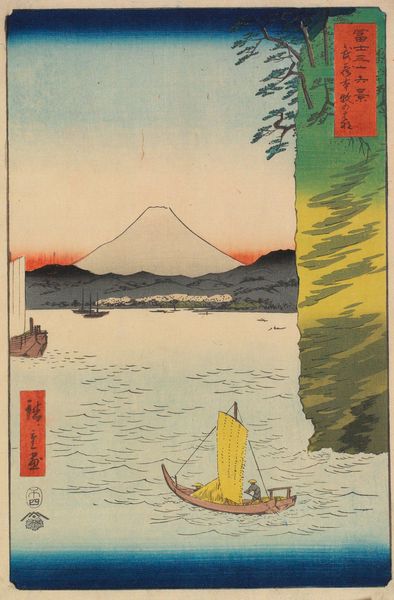
print, plein-air, ink, woodblock-print
#
water colours
# print
#
plein-air
#
asian-art
#
landscape
#
ukiyo-e
#
ink
#
tile art
#
woodblock-print
Dimensions: 13 5/16 × 8 3/4 in. (33.8 × 22.2 cm) (image, vertical ōban)
Copyright: Public Domain
Curator: Looking at this print, I feel a sense of tranquility, almost a meditative calm washes over me. The layered composition, the serene blues and greens—it's incredibly peaceful. Editor: Yes, it certainly evokes a particular mood. What we are looking at here is Utagawa Hiroshige’s “The Lake at Hakone,” believed to be created around 1858. It's a woodblock print, a popular medium in Japan at the time for mass-producing beautiful images. Curator: Woodblock. Imagine the skill needed to carve those details, that shading. I am drawn to the pyramidal forms repeating from the pointed coastline up to Mount Fuji, how each form subtly echoes the other. Editor: Indeed, Hiroshige was a master of his craft. His work became quite influential, shaping Western perceptions of Japanese aesthetics and influencing Impressionist painters. Think about how this particular piece exemplifies the "ukiyo-e" tradition, this depiction of everyday life and landscapes that became so sought after. Curator: “Pictures of the Floating World,” exactly. Even here, one feels an echo of something profound under the seemingly 'everyday.' Water, mountain, tree — recurring symbols of longevity and resilience, visual echoes of Zen Buddhism’s deep roots in Japanese culture. Editor: And let's consider Hakone itself. During the Edo period, this was a critical checkpoint on the Tōkaidō road, a major route connecting Edo (present-day Tokyo) and Kyoto. The landscape became part of the traveler's shared experience and, in turn, a part of the national consciousness. Curator: So it is an image imbued with collective memory and identity. Those little figures on the land feel less like genre and more like stand-ins, every person and no person. A visual metaphor for the journey we all take, toward a distant peak. Editor: Precisely! Consider how that sense of 'journey' shifted perceptions about landscape art and how its popularization shifted social relationships to art; this wasn’t just art for the elite anymore. Hiroshige provided access, depicting a world becoming increasingly mobile and connected. Curator: A democratizing vision, encoded within the very beauty of the scene. Thank you, now that floating world seems just a little more anchored. Editor: Indeed, the political role of landscape imagery is often overlooked. This exploration of the piece has highlighted this artwork's cultural legacy, bridging daily life with symbolic meaning and larger national conversations.
Comments
No comments
Be the first to comment and join the conversation on the ultimate creative platform.
